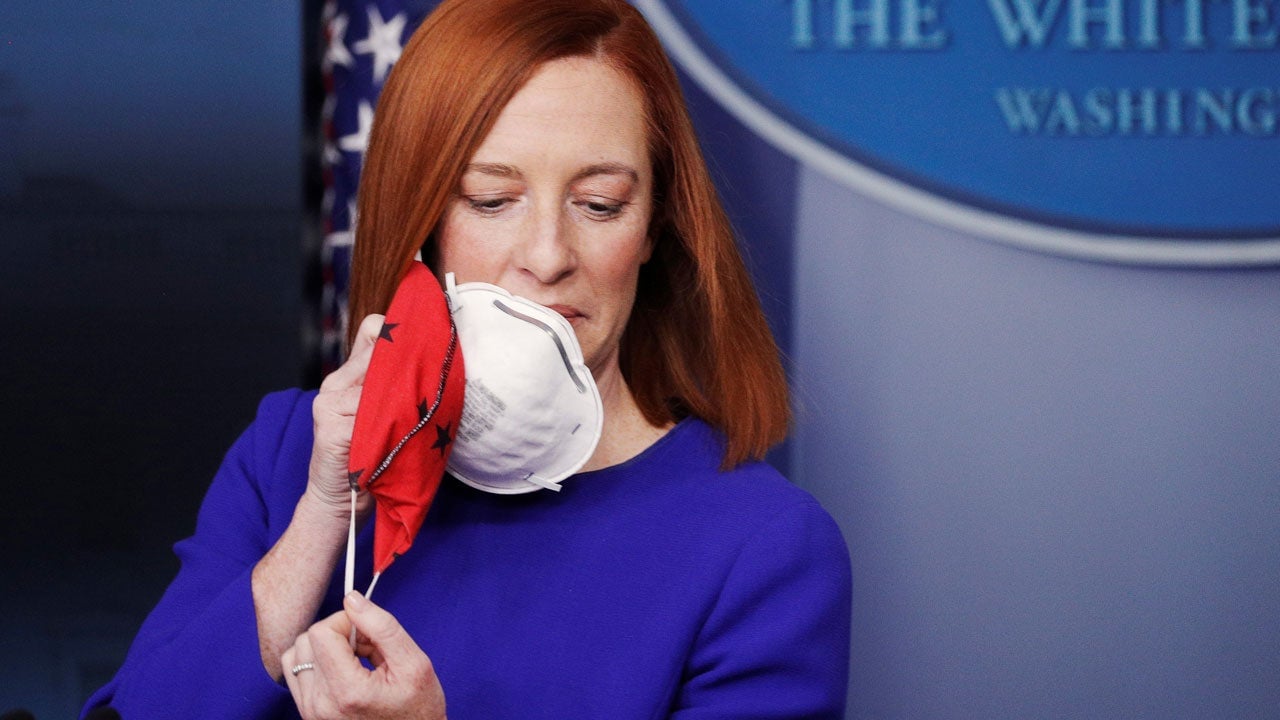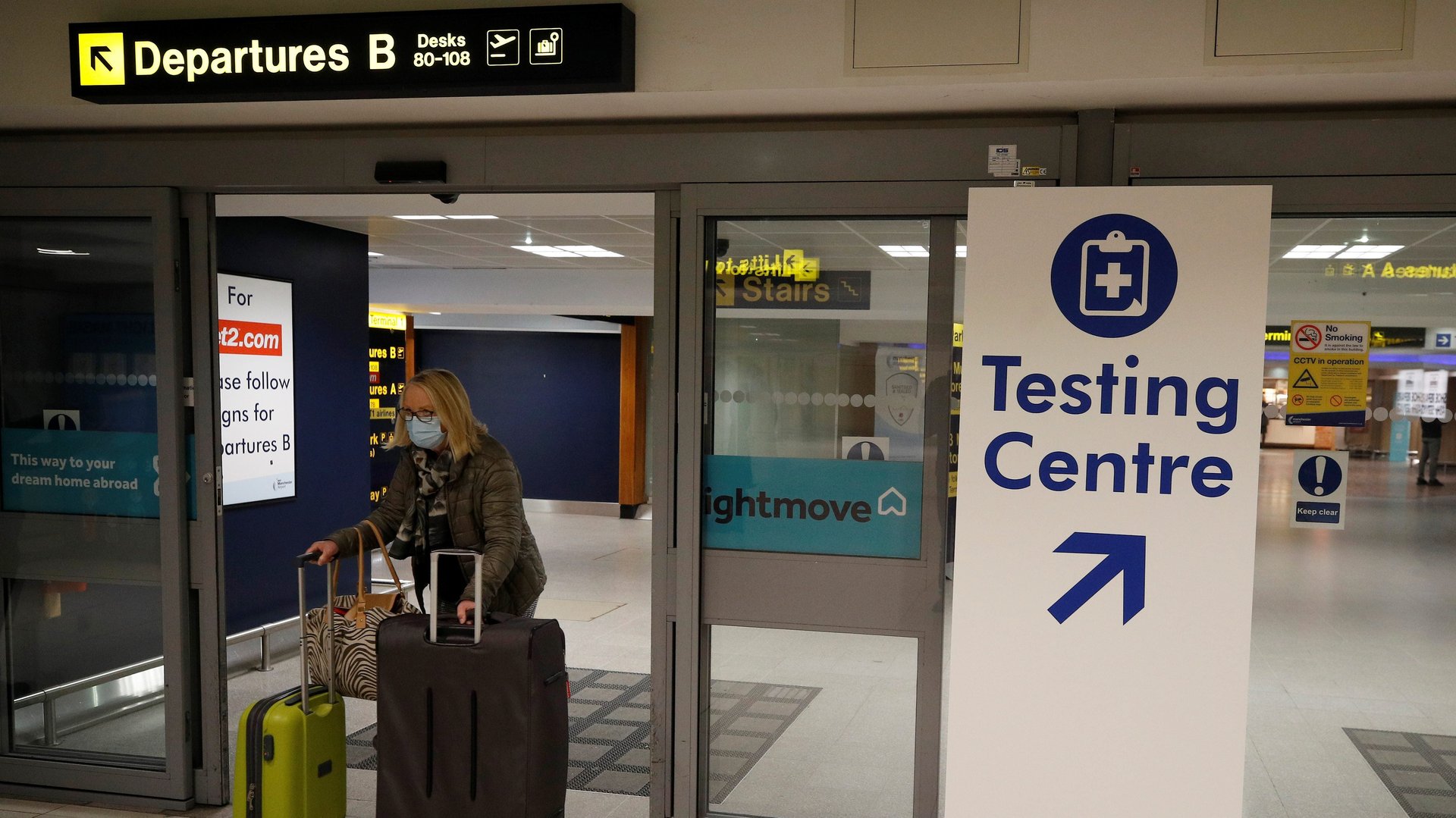Masking for a friend
Hello Quartz readers,


Hello Quartz readers,
There’s so much we can’t share these days: beverages, hugs, air kisses, regular kisses, the same personal space as most humans. That makes it all the more important to share what we can, like generosity, empathy, TV recommendations, amusing internet videos, and of course newsletters like this one. Forward today’s email to someone in your life who needs it, and worry not—we’ve got your conversation starters covered:
- “Please consider the below my official ‘No’ RSVP to your July destination wedding.”
- “Please consider the below my justification for buying 500 masks that say ‘Under this mask I’m wearing another mask.'”
- “Please consider the below my explanation for releasing a primal scream in last week’s meeting. Next time I’ll remember to mute.”
Okay, let’s get started.
The plane truth
According to new CDC guidelines, anyone entering the United States through an airport—with few exceptions—must now present proof of a recent negative Covid-19 test. The policy, a victory for airline trade groups that lobbied for a US testing mandate, is emblematic of the industry’s horizon: If you’re traveling internationally this year, you should expect to show a negative Covid-19 test at some point during your journey… and you should expect the process to be a bit of a mess.
Industry executives agree that a common global approach to testing is crucial to boost traveler confidence, and to chip away at more draconian travel bans and quarantines. But internationally, there remains little consistency in the requirements and protocols, with no two countries or airlines doing the same thing.
“We understand the passenger confusion out there,” says James Groark, vice president of airports in the Americas region for Cathay Pacific, which, like many airlines, has partnered with a private health clinic to provide testing services for its passengers.
Currently, travelers can check the US Department of State or a database maintained by the travel website Kayak for guidance on whether a destination country requires testing (at least 160 do). Most airlines accept test results from any accredited lab—though rapid antigen tests vs. PCR tests are another point of inconsistency—and testing centers have popped up at many international airports.
Groark says the best way to manage testing is with CommonPass, a smartphone app under development by the World Economic Forum. But until more airlines get on the same page, the lack of standards leaves room for problems. Law enforcement officials in France, Brazil, the UK, and elsewhere have already busted groups hawking forged negative Covid-19 tests.
Overall, 2021 travel is more likely to follow the strict example set by countries like South Korea and Australia than the more relaxed approach taken by the US and UK last year. “I highly expect for additional levels of bio-screening to become a permanent facet of cross-border travel,” says aviation consultant Carlos Ozores. “But the world needs to come to an agreement on what the right approach is. We’re still very far from that.”
💉 One big question remains. “If the vaccine doesn’t prevent transmission, I think we’re in for a really difficult year,” says travel editor Rory Boland. “Because it’s not just about you getting the vaccine then, it’s about the destination that you’re going to also having the vaccine.”
🛂 Many vaccine passports are in development. We looked at a bunch of them. But the innovative free market for passport solutions is also a recipe for disaster.
🌐 Round trips are risky. If you must engage in international travel, remember that leaving a place is usually easier than returning to it. And if things can go wrong, they likely will.
🤝 In-person events are up in the air. Davos was the first—and last—major event to take place in 2020. Now organizers must weigh the ethical risks of any gathering.
📆 And so are all your plans. Even flights for late 2021 could be disrupted as countries respond to new infection numbers, and travel insurance won’t cut it.
🚗 Local trips are here to stay. Travelers the world over are turning to “discovering or rediscovering” the places they already live.
🇨🇳 China is even catering to them. The government has been pushing homegrown attractions and trialing shorter workweeks to allow people more time to travel locally.
✦ The journey to a Quartz membership starts with one link: this one. Click on it to sign up for a seven-day free trial, no testing required.
You asked
Should I be wearing two masks?
Prompted by new coronavirus variants, the CDC is researching whether two masks could be more beneficial than one. The added advantage is filtration: The more filters between your airways and the outside world, the less likely you are to encounter a pathogen-containing particle. While the exact benefits depend on the masks you’re mixing and matching, a surgical mask + a double-layer cloth mask could have roughly the same filtration as the three-layered cloth masks recommended by the World Health Organization.
Be careful, though—too much filtration becomes unbreathable, and you want to be breathing through the mask material, not the gaps between the mask(s) and your face. One simple test: Go outside on a cold day, wear either glasses or sunglasses, and breathe for 30 seconds. If your breath fogs the glasses, too much air may be leaving (and therefore coming in) above your nose, rather than through the mask itself.

WeWorking on it!
“All our common areas are completely de-densified with at least six feet of separation between people, even on our couches. All the dedicated desks are separated at least six feet apart. We’ve enhanced the cleaning and sanitization. We’ve changed the entire filtration system in all buildings with HEPA filters. And actually it feels very safe when you come into the environment and people are very respectful. If you are in a common area, they wear masks. That is our protocol and people are abiding by that. —WeWork CEO Sandeep Mathrani in an interview with CNN Business
Over the past year, offices shuttered around the world and revenue dropped sharply for coworking spaces as clients ditched short-term leases. But real estate analysts say coworking’s future remains bright—in part because big companies are joining solo entrepreneurs in prizing office-space flexibility.
WeWork is hoping to benefit. Since its foiled IPO and co-founder Adam Neumann’s dramatic exit, the company has kept a low profile. In one year, CEO Sandeep Mathrani reportedly cut WeWork’s burn rate by half; it now has at least $3 billion in cash on its balance sheet, plus a $1 billion commitment from majority owner SoftBank. And thanks to a flurry of IPOs via special purpose acquisition companies, this could even be the year WeWork goes public. Michelle Cheng dove into the company’s not-so-distant past, and increasingly hopeful future.
2️⃣ It could cost the global economy up to $1.2 trillion per year.
3️⃣ A shorter workweek is one way to preserve jobs.
4️⃣ Today’s vaccination rates mean returning to normal in… seven years.
5️⃣ Oil prices are back to pre-pandemic levels.
6️⃣ Yelling at work is totally okay, as long as you’re doing it right.

Essential reading
- The latest 🌏 figures: 106.6 million confirmed cases; 59.5 million classified as “recovered;” 134 million vaccine doses administered.
- Dose-si-do: New variants prompt a vaccine switch in South Africa.
- Look who’s talking: How to recreate workplace chatter in a pandemic.
- The queen bed gambit: Hotels court demand with rooms that look like Netflix sets.
- Control your selfie: Is your vaccine card selfie a gift for scammers? Maybe.
Our best wishes for a healthy day. Get in touch with us at [email protected], and live your best Quartz life by downloading our iOS app and becoming a member. Today’s newsletter was brought to you by Tim McDonnell, Tripti Lahiri, Katherine Foley, Michelle Cheng, and Kira Bindrim.
